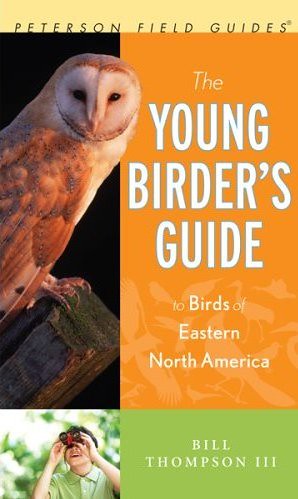Among the wide variety of book genres pertinent to the subject, the field guide is unparelleled in its importance to the growth and development of modern bird watching. In the course of its history since the development into its modern form by Roger Tory Peterson in 1934 with his landmark A Field Guide to the Birds, there have been thousands of variations created by equally as many authors and artists throughout the world chronicling the birds of regions both large and small. However among all this veritable library, certain works have come to be thought of as milestones of creativity, innovation, social importance, or simply excellence of the form.
Among these milestones are some of such importance and the use of which so ubiquitous that they are known among bird watchers simply by the author’s last name alone. “Peterson” is of course alternately and both A Field Guide to the Birds of Eastern and Central North America and A Field Guide to Western Birds. Mention “Sibley” and most any bird watcher worth his or her binoculars knows that The Sibley Guide to Birds by David Sibley is the book that is meant. “Kaufman” indicates Kenn Kaufman’s The Kaufman Field Guide to the Birds of North America. Now to these popular eponyms will most certainly be added “Thompson” to refer to Bill Thompson III’s The Young Birder’s Guide to Birds of Eastern North America. This remarkable new book is not only a new milestone in the genre of field guides, it is truly a gift to the world from one of the most talented of America’s birders, guides, and nature writers and editors.

Designed to include all the important information needed to identify and better understand the birds of the described area, The Young Birder’s Guide carefully limits how much text is included on each single species account page to prevent the “information overload” so easily produced from the ever-expanding body of knowledge of the world’s birdlife. However, before the species accounts commence, Thompson includes an excellent introductory section addressing such important topics as “Getting started in bird watching,” “Identification basics,” “Field skills,” and “Birding manners.” Also to be found here are a couple of Thompson’s famous top ten lists – “Ten things you can do for birds” and “Ten tips for beginning bird watchers.”
The species accounts are, quite frankly, masterfully done and composed in a way that only someone with years of experience helping beginning bird watchers of all ages but particularly young people to learn the craft could create. Each species included, one per page, is depicted in a format that presents a bold headline including a boldly printed English common name for the species along with a smaller typeface taxonomic name and an overall length of the bird. Below this are one or two photos presenting the bird at an optimal angle for the most pertinent field marks to be visible and in a size that can be easily and quickly assessed in the field. In addition to the photos is a superb illustration depicting the species in a definitive action or pose rendered in black-and-white by one of the bird watching community’s finest illustrators – Julie Zickefoose.
Thompson’s four part presentation of text is consistent, regularly repeated for each species, and broken into four basic areas. “Look for” includes all important visual cues and field marks. “Listen for” describes important vocalizations made by the species. “Remember” includes pertinent points to keep in mind when identifying the species such as other easily confused species, juvenile patterns, or comments on gizz. “Find it,” appearing next to the range map for the species, points out geographic and range information that the map cannot by itself convey. Then there is the “Wow!”
A bold “Wow!” comment is included in a circle in every species account. In many ways, these “Wow!” comments bring bird watching down to the essence of what causes most if not all of us to do it in the first place. It is a single pertinent point that either when one first learned it or when it is told to another person elicits the unfiltered response “Wow!” It is quite often this very “Wow!” that has long and continues to spark the interest in birds in the hearts of young naturalists past, present, and it is devoutly to be hoped, future.
In truth, The Young Birder’s Guide is applicable to all “young” bird watchers regardless of age. It is such as a result of Thompson’s superb understanding of the mental processes of both the chronologically young who are still discovering many of their cognative skills as well as the adult beginner to bird watching. The similarities between the two are indeed profound, especially the danger of being overloaded with information in a greater quantity than can be readily put to use. In both cases, the process is one of perpetual advancement from commencement of an activity to competence and onward toward mastery. Regardless of at what age anyone begins watching birds, the initial years are a time of learning and discovery in which a masterful teacher is needed to help establish, refine, and improve developing skills. Fortunately for the young birders (of all ages) of the world, Thompson has incorporated his understanding of these matters into The Young Birder’s Guide. Profound gratitude is the only proper response to such an immense gift. It is also too much for one person to accept and keep for one’s self alone; like Thompson, please share it with all the young birders you know.
Title: The Young Birder’s Guide to Birds of Eastern North America
Series: Peterson Field Guides
Author: Bill Thompson III
Hardcover: 256 pages
Publisher: Houghton Mifflin
Publication Date: April 30, 2008
Language: English
ISBN-10: 0547119348
ISBN-13: 978-0547119342
If you enjoyed reading this, please consider signing up for The Well-read Naturalist's newsletter. You'll receive a helpful list of recently published reviews, short essays, and notes about books in your e-mail inbox once each fortnight.
